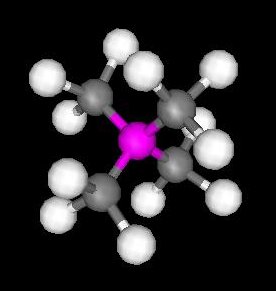 Monday, December 3, 2012 at 11:15AM
Monday, December 3, 2012 at 11:15AM "Organosilicon compounds are organic compounds containing carbon silicon bonds. Organosilicon chemistry is the corresponding science exploring their properties and reactivity.[1]
Like carbon, the organically bound silicon is tetravalent and tetrahedral. Carbon-silicon bonds are generally absent in biochemical processes,[2] although there are reports of their fleeting existence in a freshwater alga.[3] The first organosilicon compound, tetraethylsilane, was discovered by Charles Friedel and James Crafts in 1863 by reaction of tetrachlorosilane with diethylzinc. The carbosilicon silicon carbide is an inorganic compound."
"Carbon–silicon bonds compared to carbon–carbon bonds are longer (186 pm vs. 154 pm) and weaker with bond dissociation energy 451 kJ/mol vs. 607 kJ/mol.[4] The C–Si bond is somewhat polarised towards carbon due to carbons greater electronegativity (C 2.55 vs Si 1.90). One manifestation of bond polarization in organosilanes is found in the Sakurai reaction. In oxidative couplings silicon is represented by the Hiyama coupling. Certain alkyl silanes can be oxidized to an alcohol in the Fleming–Tamao oxidation."

Reader Comments